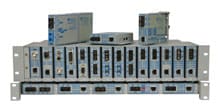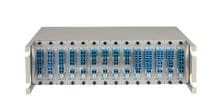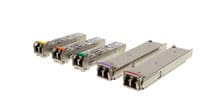- Products
- PoE Media Converters and Switches
- Ethernet & PoE Switches Product Selector
- Multi-Gigabit Ethernet and PoE Switches
- PoE PSE Commercial Switches
- PoE PSE Industrial Fiber Switches
- PoE Industrial Copper Extenders
- PoE Powered Media Converters
- PoE PSE Media Converters
- PoE Extenders & Injectors Product Selector
- Pluggable Transceivers Product Selector
- Product Lines
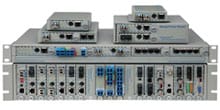
- iConverter Managed Multi-service Platform
- Copper to Fiber Media Converters
- Ethernet Media Converters
- 10 Gigabit Copper-to-Fiber
- 10/100/1000 Copper to 10 Gigabit Fiber
- 10/100/1000 Copper-to-Fiber with Integrated Management
- 10/100/1000 Industrial Copper-to-Fiber with Integrated Management
- 10/100/1000 Copper-to-Fiber with VLAN
- 10/100/1000 Dual Media Converter with VLAN
- Gigabit Copper-to-Fiber
- 10/100 Copper-to-Fiber with Integrated Management
- 10/100 Industrial Copper-to-Fiber with Integrated Management
- 10/100 Copper-to-Fiber with VLAN
- 10/100 Copper-to-Fiber
- Fast Ethernet Copper-to-Fiber
- Fast Ethernet Redundant Links
- 10Mbps Copper-to-Fiber
- 10Mbps Copper to Coax
- TDM Media Converters
- Serial Media Converters
- Ethernet Media Converters
- Fiber to Fiber Media Converters
- 10 Gigabit Fiber-to-Fiber Converter and Transponder
- 10 Gigabit Industrial Converter and Transponder
- SFP-to-SFP Fiber Converter and Transponder
- SFP-to-SFP Industrial Fiber Converter and Transponder
- Gigabit Fiber to-Fiber with 3 Rs
- 100/1000 Fiber-to-Fiber with 3 Rs
- Gigabit Fiber-to-Fiber
- Fast Ethernet Fiber-to-Fiber with 3 Rs
- Fast Ethernet Fiber-to-Fiber
- OC-3/STM-1 Fiber-to-Fiber
- OC-12/STM-4 Fiber-to-Fiber
- Carrier Ethernet Network Interface Devices
- CE 2.0 - 10G Demarcation NID
- CE 2.0 - 10G Demarcation and Aggregation NID
- CE 2.0 - 10/100/1000 Mult-port NID
- CE 2.0 - 10/100/1000 Mult-port NID with PoE
- CE 2.0 - 10/100/1000 8-Port NID
- SFP NID - Gigabit SFP NID
- microNID - 100/1000 compact NID
- CE 1.0 Service OAM - 10/100/1000 NID
- CE 1.0 Link OAM - 10/100/1000 Copper-to-Fiber NID
- CE 1.0 Link OAM - 10/100 Copper-to-Fiber NID
- CE 1.0 Link OAM - Gigabit Fiber-to-Fiber NID
- CE 1.0 Link OAM - Fast Ethernet Fiber-to-Fiber NID
- CWDM Multiplexers
- T1/E1 Multiplexers
- Ethernet Switch Modules
- Management System
- Chassis Options

- 1-Module Industrial Chassis
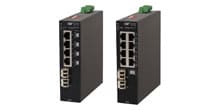
- RuggedNet Industrial Switches and Extenders
- Industrial PoE PSE Fiber Switches
- Multi-Gigabit Managed Industrial PoE+/BT Switches
- Multi-Gigabit Unmanaged Industrial PoE+/BT Switches
- 10G Managed 802.3bt PoE Switches
- 10G Unmanaged 802.3bt PoE Switches
- 10G Managed PoE+ Switches
- 10G Unmanaged PoE+ Switches
- 1G Managed PoE+ Switches
- 1G Unmanaged PoE+ Switches
- 1G Unmanaged 802.3bt PoE Switches
- 1G Managed 802.3bt PoE Switches
- Industrial Ethernet Switches
- Industrial PoE Copper Extenders
- Industrial Power Supplies

- OmniConverter Media Converter, Switches and Extenders
- PoE PSE Media Converters
- 10G Multi-Gigabit / Multi-Rate PoE Media Converter
- 10G Multi-Gigabit / Multi-Rate Media Converter
- 10/100 Multi-port PoE+ Media Converter
- 10/100 PoE+ Media Converter
- 10/100/1000 Multi-Port PoE+ Media Converter
- Industrial 10/100/1000 Multi-Port PoE+ Media Converter
- 10/100/1000 PoE+ Media Converter
- 10/100/1000 PoE++ 60W-100W Media Converter
- Industrial 10/100 Multi-port PoE+ Media Converter
- 1U Rack-Mount Shelf
- PoE PSE Compact Switches
- Multi-Gigabit Managed PoE+/BT Switches
- Multi-Gigabit Unmanaged PoE+/BT Switches
- 10G Managed 802.3bt PoE Switches
- 10G Unmanaged 802.3bt PoE Switches
- 10G Managed PoE+ Switches
- 10G Unmanaged PoE+ Switches
- 1G Managed PoE+ Switches
- 1G Unmanaged PoE+ Switches
- 1G Managed 802.3bt PoE Switches
- 1G Unmanaged 802.3bt PoE Switches
- Ethernet Switches
- PoE Copper Extenders
- Single Pair Ethernet Converters
- PoE Injectors
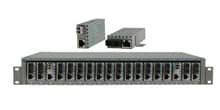
- miConverter Unmanaged Miniature Media Converters
- 10/100/1000 Copper-to-Fiber
- Industrial 10/100/1000 Copper-to-Fiber
- 10/100/1000 Ultra-Compact Copper-to-Fiber
- Gigabit Copper-to-Fiber
- 10/100/1000 Copper-to-Fiber PoE Powered
- 10/100 Copper-to-Fiber
- 10/100 Ultra-Compact Copper-to-Fiber
- 10/100 Copper-to-Fiber PoE Powered
- 18-Module Chassis
- Industrial 10/100 Copper-to-Fiber PoE Powered
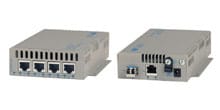
- FlexSwitch Compact Switches
- Solutions
- Company
- Support
- How to Buy
PoE Injector vs. PoE Switch: Which One is Right for Your Network?

In today’s networks, Power over Ethernet (PoE) makes it easy to power devices like IP cameras, wireless access points, and VoIP phones. By using just one cable for both power and data, PoE simplifies installation and helps save on costs. Two common options for delivering PoE are PoE injectors and PoE switches. But which one is better suited for your network? In this post, we’ll dive into the differences, explore how each option works, and help you decide the best solution for your needs.
What is a PoE Injector?
A PoE injector, sometimes referred to as a power injector or PoE power injector, is a device that adds power to a non-PoE Ethernet connection. It allows network administrators to upgrade existing infrastructure without needing to replace non-PoE switches. By adding a PoE injector, you can send both power and data over a single Ethernet cable to a PoE-enabled device, such as a camera or wireless access point.
Top Reasons to Use PoE Injector
Below are the primary benefits of using PoE injectors in your network:
1. Easy and Flexible Installation
PoE injectors offer flexibility in terms of device placement. Without the constraints of needing to be near a power outlet, devices can be positioned wherever network access is required. This makes it easier to place devices like security cameras or wireless access points in optimal locations, such as ceilings or outdoor areas, without running additional wiring.
2. Cost-Effective Solution
One of the most significant advantages of using PoE injectors is cost savings. By eliminating the need for separate power cables and outlets, PoE injectors reduce the overall cost of installation and maintenance. Instead of hiring electricians to install power sources at multiple points in a building, a PoE injector supplies power directly through an Ethernet cable, simplifying the deployment of powered devices.
3. Centralized Power Management
With a PoE injector, you can centralize power distribution, simplifying network management. This means network administrators can control and monitor power supply to all devices from a single location, improving efficiency. In case of device failure or maintenance, administrators can remotely reset devices, reducing downtime.
4. Energy Efficiency
By delivering power only when needed, PoE injectors help conserve energy. Devices that are idle or not in use will not receive power unnecessarily, reducing the overall energy consumption of the network. This makes PoE injectors an environmentally friendly choice for businesses looking to lower their energy footprint.
5. Supports Legacy Equipment
PoE injectors are particularly beneficial in environments where existing network switches do not support PoE. Instead of upgrading to a new PoE-enabled switch, network administrators can integrate a PoE injector to power devices while keeping their existing equipment intact. This allows businesses to extend the life of their network infrastructure without significant investments.
How Does a PoE Injector Work?
A PoE injector works by inserting power into an Ethernet cable while maintaining data transmission. It connects to a regular switch or router on one side and to the PoE device on the other. For instance, a PoE injector 48V is a popular choice for delivering standard voltage to power devices, but there are also other voltage options like the PoE injector 12V and 24v PoE injectors. The unifi PoE injector is commonly used with Ubiquiti networking devices.
The ethernet PoE injector is available in different power classes, with PoE++ injectors delivering up to 100 watts, ideal for power-hungry devices like PTZ cameras or outdoor lighting.
Types of PoE Injectors
- Active PoE Injectors: These detect if the connected device is PoE-compatible before sending power, preventing potential damage to non-PoE devices.
- Passive PoE Injectors: These always send power through the Ethernet cable, regardless of the device. It's essential to ensure the connected device can handle the supplied voltage to avoid damage. A passive PoE injector is more affordable but requires careful consideration when matching it with devices.
What is a PoE Switch?
A PoE switch integrates PoE capabilities directly into the switch itself, allowing it to provide both data and power to connected devices without needing an additional injector. Unlike a PoE injector, a PoE switch can power multiple devices simultaneously through its ports, making it a more scalable solution for larger networks.
A PoE injector switch provides a direct power source for each connected device. If you have a variety of PoE devices across your network, a PoE switch can be a more convenient and centralized solution.
Benefits of Using PoE Switches
Here are the main benefits of incorporating PoE switches into your network:
1. Integrated Power and Data Delivery
The primary benefit of PoE switches is their ability to combine power and data transmission over a single Ethernet cable. This eliminates the need for separate power outlets and reduces the number of cables, streamlining network installations and minimizing cable clutter.
2. Centralized Power Management
PoE switches allow centralized control over the power supply of all connected devices. Administrators can monitor, manage, and reset powered devices remotely, improving operational efficiency. Additionally, with features like PoE scheduling, administrators can manage power distribution more effectively, turning devices off during non-operational hours to conserve energy.
3. Supports High-Power Devices
Many modern PoE switches support PoE+ (802.3at) or PoE++ (802.3bt) standards, allowing them to deliver more power to high-power devices like PTZ (Pan-Tilt-Zoom) cameras, outdoor access points, or digital signage. This makes them versatile enough to handle a wide range of devices, from low-power VoIP phones to more power-hungry equipment.
4. Improved Network Scalability
PoE switches are ideal for scalable network infrastructures. As businesses expand and add more devices to the network, PoE switches make it easy to connect new devices without needing to run separate power lines. New powered devices can be added simply by connecting them to the switch via an Ethernet cable, enhancing flexibility in network growth.
5. Reduced Maintenance and Downtime
With centralized control and remote power management features, PoE switches reduce the need for on-site maintenance. Devices can be monitored, reset, or even powered off remotely, minimizing the need for physical intervention and reducing network downtime. In environments where uptime is critical, PoE switches provide a reliable, low-maintenance solution.
6. Greater Flexibility for Device Placement
Since PoE switches provide power directly through Ethernet cables, devices no longer need to be installed near power outlets. This flexibility allows you to position devices in the best possible locations for coverage and performance, whether it’s outdoor security cameras, wireless access points in hard-to-reach places, or access points in remote buildings.
PoE Injector vs. PoE Switch: Key Differences
The main difference between a PoE injector and a PoE switch comes down to scalability and cost:
- Number of Ports: A PoE injector typically supports one device at a time, while a PoE switch can power multiple devices simultaneously. If you have multiple PoE devices, a switch might be a more efficient choice.
- Cost: A PoE injector is a cost-effective solution for powering a single device, making it ideal for small setups. On the other hand, a PoE switch is an investment that provides a long-term solution, especially for larger networks.
- Scalability: As mentioned, PoE injectors are best for small setups or retrofitting existing networks, while PoE switches are suited for larger deployments that need to scale over time.
- Setup Complexity: PoE injectors are simple to deploy, requiring just one connection between the injector and the device. PoE switches, although more complex, reduce cable clutter since everything is managed from one centralized device.
When Should You Use a PoE Injector?
A PoE injector is an excellent choice when you have an existing network and only need to power one or two devices. Here are a few scenarios where using an injector might be ideal:
- Retrofitting an existing network: If you already have a non-PoE switch and don’t want to replace it, using a PoE injector can be a cost-effective solution.
- Single device installation: If you only need to power one device, such as a security camera or a single wireless access point, a PoE injector provides a straightforward solution.
- Powering devices at a distance: If your PoE device is located far away from the main switch, placing a PoE injector closer to the device can help maintain power and data transmission without signal loss.
When Should You Use a PoE Switch?
A PoE switch is the right choice for larger or growing networks where multiple PoE devices need to be powered. Here are some scenarios where a PoE switch might be more appropriate:
- Large networks: If you have multiple PoE devices, such as IP cameras, VoIP phones, or access points, a PoE switch is more scalable and easier to manage.
- Centralized power management: A PoE switch provides centralized management of power delivery, making it easier to troubleshoot and maintain your network.
- Reducing clutter: Since a PoE switch integrates both data and power, it reduces the need for additional cables and devices like injectors, leading to a cleaner, more organized setup.
Key Considerations
- Power Requirements: Ensure that the injector or switch you choose matches the power requirements of your devices. Devices like PTZ cameras or wireless access points may require PoE++ injectors to deliver enough power.
- Voltage: Different devices require different voltage levels. For instance, a PoE Injector 48V is commonly used for higher-power devices, while a PoE Injector 12V or 24V PoE injector might be needed for lower-power applications.
- Passive vs. Active PoE: If you are using a passive PoE injector, ensure your devices can handle the power being supplied without risk of damage. For safer, automatic power control, an active injector is the better choice.
Will a PoE Injector Give my Ethernet Port Internet?
A PoE injector will not directly provide internet access to your Ethernet port. Instead, it is designed to inject power into the Ethernet cable, allowing you to power devices like IP cameras or wireless access points while simultaneously transmitting data over the same cable.
To get internet access, the Ethernet port must still be connected to a router or switch that is responsible for providing network connectivity. The PoE injector only adds power to the connection but doesn't handle routing or internet distribution itself.
Will Adding a PoE Injector Make My Ethernet Faster?
Adding a PoE injector will not make your Ethernet connection faster. A PoE injector is designed to supply power to devices over an Ethernet cable, combining both power and data transmission into a single cable. However, it does not impact the speed of the data being transmitted.
The speed of your Ethernet connection is determined by factors like the quality of your network infrastructure, the capabilities of your router or switch, and the Ethernet standard (such as Cat5e, Cat6, etc.) being used. While a PoE injector simplifies installation by eliminating the need for separate power cables, it does not increase or enhance the actual data transfer rate.
Conclusion: Which One is Right for You?
Choosing between a PoE injector and a PoE switch depends on your network size, budget, and future scalability needs. For small networks or retrofitting existing setups, a PoE injector is a simple, cost-effective solution. However, for larger deployments where scalability and centralized management are important, a PoE switch is the more efficient option.
Understanding the differences between these technologies helps you make an informed decision, ensuring your network is powered efficiently and effectively. Whether you opt for an ethernet PoE injector, PoE injector switch, or a full PoE switch, knowing the right tool for the job is key to building a reliable network.
To ensure your network is powered efficiently and meets your specific needs, whether you choose a PoE injector or a PoE switch, having the right tools is essential. Explore our wide range of PoE solutions and network products at Omnitron Systems to find the perfect fit for your setup. Let us help you build a smarter, more reliable network today! Call Us Now

